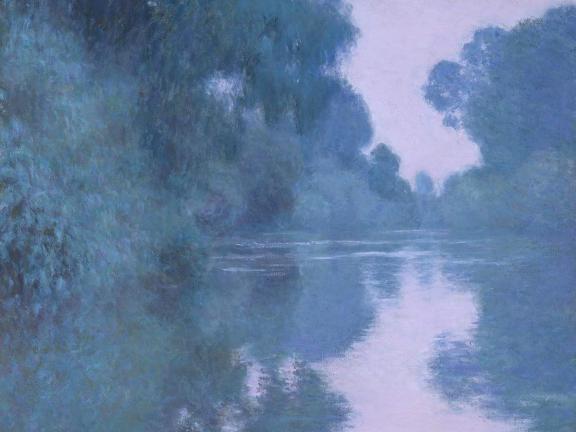
Claude Monet, Morning on the Seine near Giverny (detail), 1897. Oil on canvas. Gift of Mrs. W. Scott Fitz.
Claude Monet (1840–1926) saw the world differently. He found extraordinary beauty in settings both mundane and majestic, and he shared that enthusiasm—that commitment to the everyday, the here and now—in paintings that changed the course of art. Perhaps no other artist has captured Boston’s imagination as enduringly as Monet. Opening at the Museum of Fine Arts, Boston (MFA), on April 17, Monet and Boston: Legacy Illuminated highlights 25 masterpieces by the artist—selections drawn from the Museum’s extraordinary holdings of his work, alongside select loans from local private collections.
The exhibition begins by looking at Monet’s development and early career as well as his engagement with Japanese art, through juxtapositions of the artist’s paintings with prints from the MFA’s renowned ukiyo-e collection. It then broadens to consider Monet’s work alongside nine paintings by his predecessor Jean-François Millet (1814–1875) and seven sculptures by his contemporary Auguste Rodin (1840–1917), artists whose works were likewise embraced by Bostonians. A generation older, Millet helped pave the way for Impressionism with images of French landscapes and rural labor such as The Sower (1850), beloved by Boston’s collectors and Monet alike. Monet and Rodin, who is represented in the exhibition with celebrated works such as Eternal Springtime (modeled about 1881; cast about 1916–17) and Psyche (1899), shared a deep mutual respect and their art was often shown together, including in Boston in 1905.
Monet never traveled to Boston himself, but even during his lifetime his paintings could be found in astonishing numbers on the walls of the city’s art galleries, in collectors’ homes—and at the MFA. Monet and Boston: Legacy Illuminated celebrates that history, following Monet and Boston: Lasting Impression, which was organized in honor of the Museum's 150th anniversary in